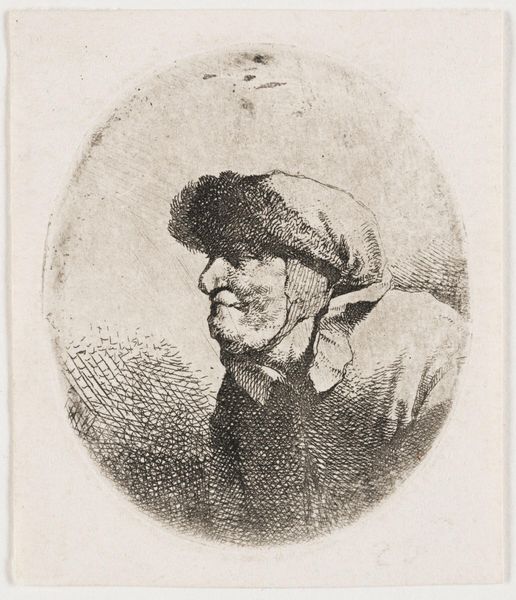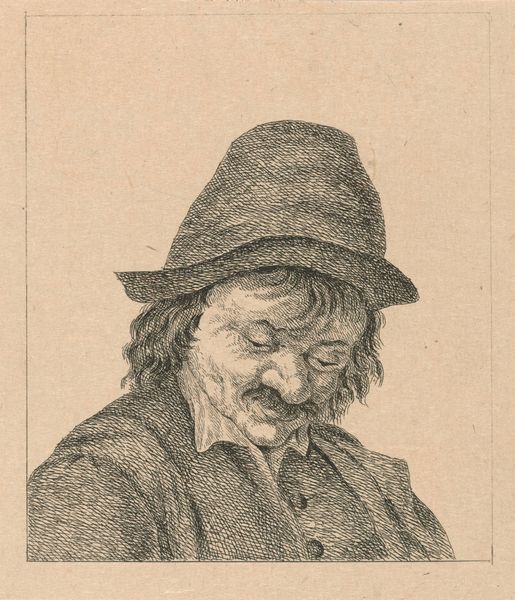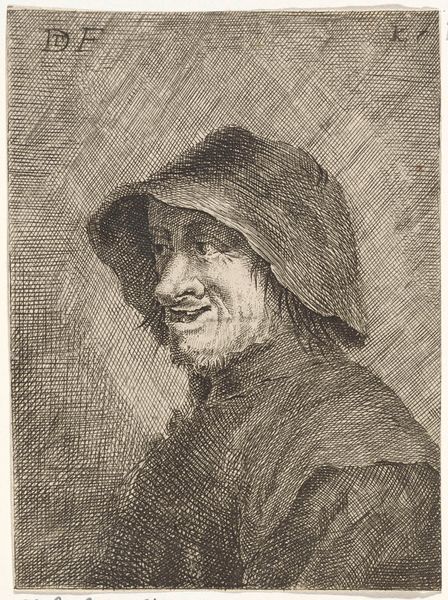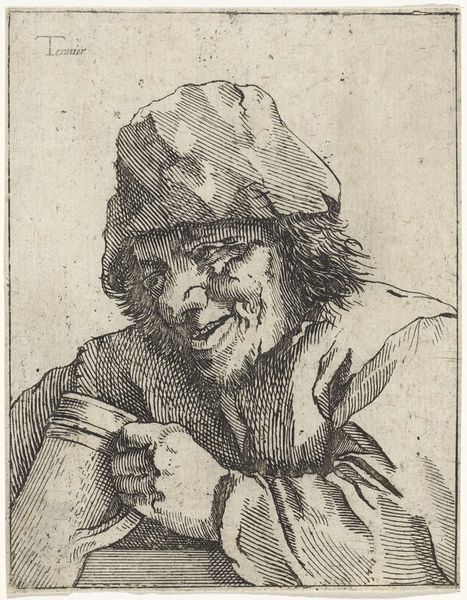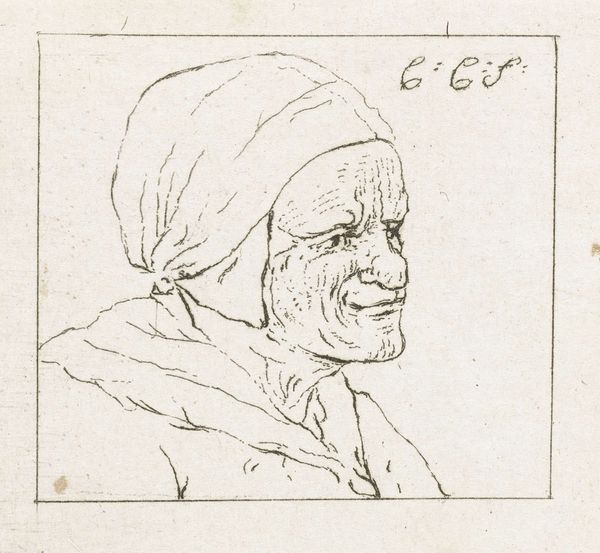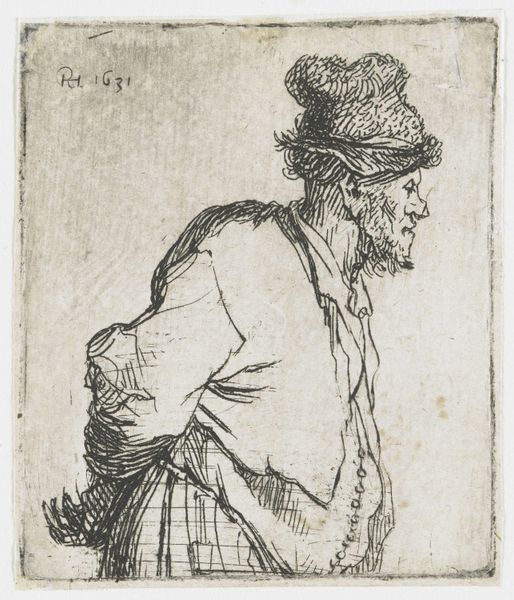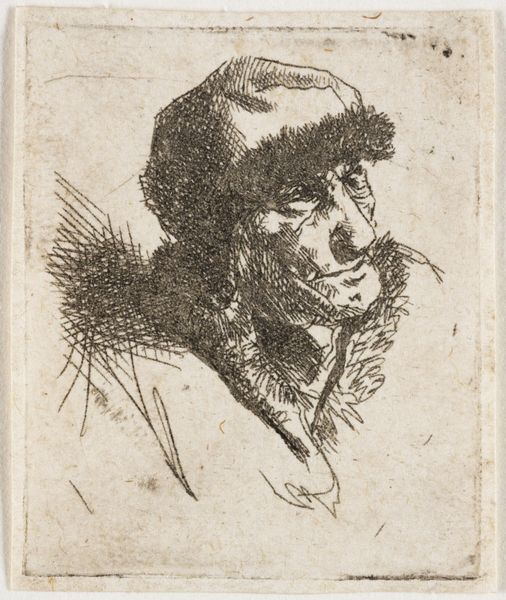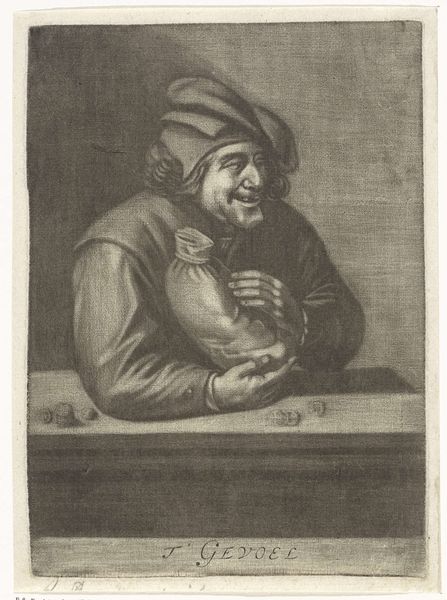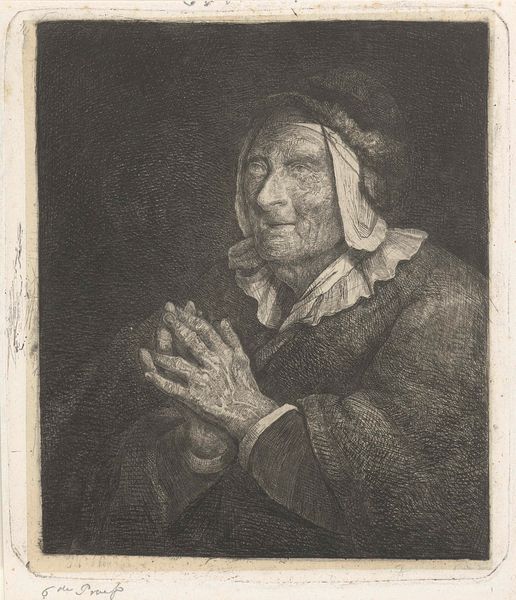
#
toned paper
#
facial expression drawing
#
pencil sketch
#
caricature
#
personal sketchbook
#
portrait reference
#
sketchbook drawing
#
portrait drawing
#
watercolour illustration
#
sketchbook art
Dimensions: height 32 mm, width 29 mm
Copyright: Rijks Museum: Open Domain
Editor: So, this is “Portret van een boer in profiel,” created sometime between 1767 and 1780. It’s a small drawing, watercolour and pencil on toned paper. It strikes me as both comical and slightly melancholic. What do you see in this piece, especially concerning its depiction of the farmer? Curator: It's fascinating how readily we categorize the emotional landscape of a portrait like this. Notice how the artist emphasizes certain features – the nose, the ears – almost to the point of caricature. What emotions do these exaggerated features evoke, and why do you think the artist chose to amplify them? Editor: I suppose they highlight a certain rustic quality, but also maybe hint at the social commentary, possibly critiquing the rigid class structure of the time? Curator: Precisely. The symbols are there – consider the farmer’s cap, a potent marker of social status and regional identity in that era. And what about the “No” inscribed above the figure? It feels like a refusal. Whose refusal might that be? The farmer’s, society’s, or perhaps even the artist's own resistance to idealizing the rural subject? Editor: That’s an interesting point! I hadn’t thought about it that way, the idea of resistance being visualized in a seemingly simple portrait. It gives it so much more depth. Curator: Indeed. And consider the toned paper – it adds a layer of historical depth, reminding us that even materials carry their own cultural baggage. By understanding the language of these visual symbols, we can unlock layers of meaning within the portrait. What will you take away from looking closely at the symbols of the portrait? Editor: It's made me appreciate how portraits from everyday life reflect historical narratives, turning simple profiles into complex cultural statements! Thanks!
Comments
No comments
Be the first to comment and join the conversation on the ultimate creative platform.


